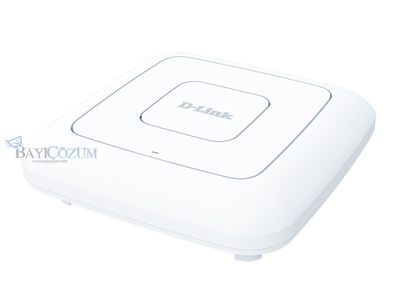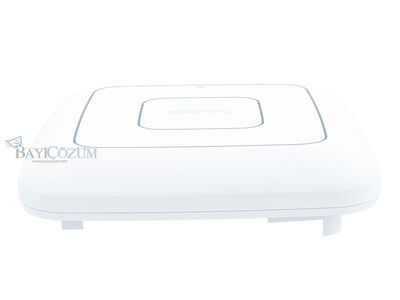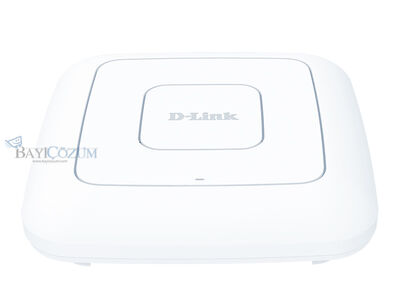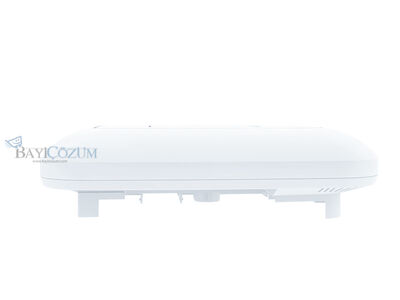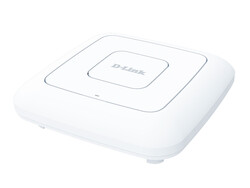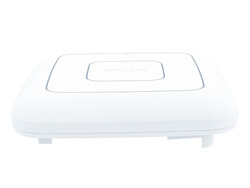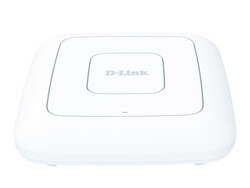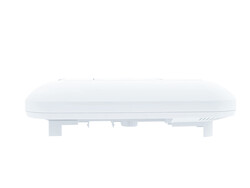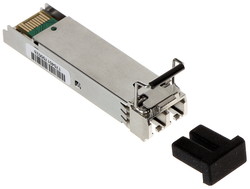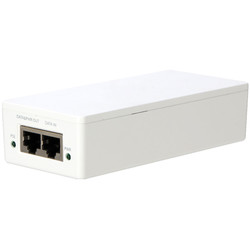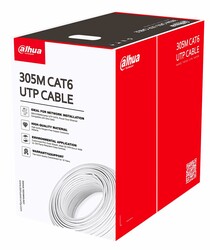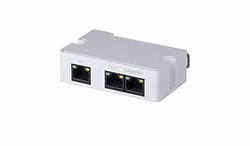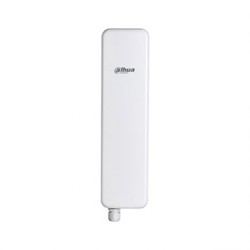Liste Fiyatı :
248,00 USD
Size Özel Fiyatı :
248,00 USD +KDV
248,00 USD
Size Özel Fiyatı :
248,00 USD +KDV
Stok Adedi :
- Ürün Özellikleri
- Ödeme Seçenekleri
- Tavsiye Et
- Resimler
-
Tanımlama
Wireless InterfaceUsing the DAP-400P device, you are able to quickly create a high-speed wireless network at home or in your office, which lets computers and mobile devices access it virtually anywhere (within the operational range of your wireless network). Simultaneous activity of 2.4GHz band and 5GHz band allows performing a wide range of tasks. The access point can operate as a base station for connecting wireless devices of the standards 802.11a, 802.11b, 802.11g, 802.11n, and 802.11ac.DAP-400P delivers reliable, high-speed wireless performance up to 867Mbps for 5GHz using the 802.11ac standard and up to 400Mbps for 2.4GHz.Secure Wireless ConnectionThe device supports multiple functions for the wireless interface: several security standards (WEP, WPA/WPA2), MAC address filtering, different operation modes (access point, router, client), WPS, WMM.Advanced Capabilities of Wireless NetworkThe Super MESH function is D-Link implementation of Mesh networks designed to quickly connect multiple devices into one transport network, for example, when it's required to provide high-quality Wi-Fi coverage without dead zones in living units of complicated planning or it's needed to create a large temporary Wi-Fi network for an outdoor event.Multi-user MIMO technology allows to distribute the access point's resources to let multiple wireless clients use the Wi-Fi network efficiently, keeping high rates for HD media streaming, lag-free gaming, and fast transfer of large files.Transmit Beamforming technology allows to flexibly change the antennas' radiation pattern and to redistribute the signal directly to wireless devices connected to the access point.Smart adjustment of Wi-Fi clients is useful for networks based on several D-Link access points or routers – when the smart adjustment function is configured on each of them, a client always connects to the access point (router) with the highest signal level.Support of guest Wi-Fi network in the router mode allows you to create a separate wireless network with individual security settings and maximum rate limitation. Devices connected to the guest network will be able to access the Internet, but will be isolated from the devices and resources of the access point's LAN.WAN Port with PoE SupportThe access point is equipped with a WAN port with Power over Ethernet (PoE) support which allows to use one Ethernet cable for data and power transfer. In the access point mode, the port with PoE support is used as a LAN port.Several Operation ModesIn the access point mode, you are able to use DAP-400P to create a wireless network or to connect to a wired router. In the router mode, you are able to connect DAP-400P to a cable or DSL modem or to a private Ethernet line and use a high-speed Internet connection to successfully fulfill a wide range of professional tasks.The “client” function is available in both modes and allows using DAP-400P as a wireless client and a wireless repeater in the access point mode and as a WISP repeater in the router mode.SecurityThe SSH protocol support provides more secure remote configuration and management of the access point due to encryption of all transmitted traffic, including passwords.Now the schedules are also implemented; they can be applied to the rules of various filters and used to reboot the access point at the specified time or every specified time period and to enable/disable the wireless network.Easy configuration and updateYou can configure the settings of the DAP-400P device via the user-friendly web-based interface (the interface is available in two languages – in Russian and in English).The configuration wizard allows you to connect DAP-400P to a wired or wireless ISP (when switched to the router mode) in several simple steps or quickly set needed parameters for operation as an access point, repeater, or client (when switched to the access point mode).You can simply update the firmware: when the Internet access is provided, the access point itself finds approved firmware on D Link update server and notifies when ready to install it.Genel Özellikler
HardwareProcessor• MT7621AT (880MHz, dual core)RAM• 128MB, DDR3 SDRAMFlash• 16MB, SPIInterfaces• 10/100/1000BASE-T WAN port with PoE support• 10/100/1000BASE-T LAN portLEDs• POWER / WLAN• INTERNET• LANButtons• RESET button to restore factory default settingsAntenna• Two internal antennas for 2.4GHz (3dBi gain)• Two internal antennas for 5GHz (3dBi gain)MIMO• 2 x 2, MU-MIMOPower connector• Power input connector (DC)SoftwareOperation Modes• Access point• RouterWAN connection types• PPPoE• IPv6 PPPoE• PPPoE Dual Stack• Static IPv4 / Dynamic IPv4• Static IPv6 / Dynamic IPv6• PPPoE + Static IP (PPPoE Dual Access)• PPPoE + Dynamic IP (PPPoE Dual Access)• PPTP/L2TP + Static IP• PPTP/L2TP + Dynamic IPNetwork functions• DHCP server/relay• Advanced configuration of built-in DHCP server• Stateful/Stateless mode for IPv6 address assignment, IPv6 prefix delegation• Automatic obtainment of LAN IP address (for access point/repeater/client modes)• DNS relay• Dynamic DNS• Static IPv4/IPv6 routing• IGMP Proxy• RIP• Support of UPnP IGD• Support of VLAN• WAN ping respond• Support of SIP ALG• Support of RTSP• WAN failover• Autonegotiation of speed, duplex mode, and flow control/Manual speed and duplex mode setup for each Ethernet port• Built-in UDPXY applicationFirewall functions• Network Address Translation (NAT)• Stateful Packet Inspection (SPI)• IPv4/IPv6 filter• MAC filter• URL filter• DMZ• Virtual servers• Built-in Yandex.DNS web content filtering service• Built-in SkyDNS web content filtering serviceVPN• IPsec/PPTP/L2TP/PPPoE pass-through• PPTP/L2TP tunnels• IPsec tunnelsTransport/Tunnel modeIKEv1/IKEv2 supportDES encryptionNAT TraversalSupport of DPD (Keep-alive for VPN tunnels)Management and monitoring• Local and remote access to settings through SSH/TELNET/WEB (HTTP/HTTPS)• Bilingual web-based interface for configuration and management (Russian/English)• Notification on connection problems and auto redirect to settings• Firmware update via web-based interface• Automatic notification on new firmware version• Saving/restoring configuration to/from file• Support of logging to remote host• Automatic synchronization of system time with NTP server and manual time/date setup• Ping utility• Traceroute utility• TR-069 client• SNMP agent (SNMPv2/v3)• Schedules for filters rules, automatic reboot, and enabling/disabling wireless network• Automatic upload of configuration file from ISP's server (Auto Provision)Wireless Module ParametersStandards• IEEE 802.11a/n/ac• IEEE 802.11b/g/nFrequency rangeThe frequency range depends upon the radio frequency regulations applied in your country• 2400 ~ 2483.5MHz• 5150 ~ 5350MHz• 5650 ~ 5850MHzWireless connection security• WEP• WPA/WPA2 (Personal/Enterprise)• МАС filter• WPS (PBC/PIN)Advanced functions• Super Mesh function• “Client” function (access point mode)Wireless network clientWireless network repeater• “Client” function (router mode)WISP repeater• WMM (Wi-Fi QoS)• Information on connected Wi-Fi clients• Advanced settings• Smart adjustment of Wi-Fi clients• Guest Wi-Fi / support of MBSSID• Limitation of wireless network rate• Periodic scan of channels, automatic switch to least loaded channel• Support of 802.11ac (5GHz) and 802.11n (2.4GHz) TX Beamforming• Autonegotiation of channel bandwidth in accordance with environment conditions (20/40 Coexistence)• Support of STBCWireless connection rate1• IEEE 802.11a: 6, 9, 12, 18, 24, 36, 48, and 54Mbps• IEEE 802.11b: 1, 2, 5.5, and 11Mbps• IEEE 802.11g: 6, 9, 12, 18, 24, 36, 48, and 54Mbps• IEEE 802.11n (2.4GHz): 6.5–300Mbps (MCS0–MCS15) to 400Mbps (QAM256)• IEEE 802.11n (5GHz): from 6.5 to 300Mbps (from MCS0 to MCS15)• IEEE 802.11ac (5GHz): from 6.5 to 867Mbps (from MCS0 to MSC9)Transmitter output powerThe maximum value of the transmitter output power depends upon the radio frequency regulations applied in your country• 802.11a (typical at room temperature 25 °C)17dBm at 6, 54Mbps• 802.11b (typical at room temperature 25 °C)17dBm at 1, 11Mbps• 802.11g (typical at room temperature 25 °C)17dBm at 6, 54Mbps• 802.11n (typical at room temperature 25 °C)17dBm at MCS0~616dBm at MCS7• 802.11ac (typical at room temperature 25 °C)17dBm at MCS0~616dBm at MCS715dBm at MCS8~9Receiver sensitivity• 802.11a (typical at PER < 10% (1000-byte PDUs) at room temperature 25 °C)-82dBm at 6Mbps-81dBm at 9Mbps-79dBm at 12Mbps-77dBm at 18Mbps-74dBm at 24Mbps-70dBm at 36Mbps-66dBm at 48Mbps-65dBm at 54Mbps• 802.11b (typical at PER = 8% (1000-byte PDUs) at room temperature 25 °C)-90dBm at 1Mbps-90dBm at 2Mbps-88dBm at 5.5Mbps-86dBm at 11Mbps• 802.11g (typical at PER < 10% (1000-byte PDUs) at room temperature 25 °C)-82dBm at 6Mbps-81dBm at 9Mbps-79dBm at 12Mbps-77dBm at 18Mbps-74dBm at 24Mbps-70dBm at 36Mbps-66dBm at 48Mbps-65dBm at 54Mbps• 802.11n (typical at PER = 10% (1000-byte PDUs) at room temperature 25 °C)HT20-82dBm at MCS0-79dBm at MCS1-77dBm at MCS2-74dBm at MCS3-70dBm at MCS4-66dBm at MCS5-65dBm at MCS6-64dBm at MCS7HT40-79dBm at MCS0-76dBm at MCS1-74dBm at MCS2-71dBm at MCS3-67dBm at MCS4-63dBm at MCS5-62dBm at MCS6-61dBm at MCS7Receiver sensitivity• 802.11ac (typical at PER = 10% (1000-byte PDUs) at room temperature 25 °C)HT20-82dBm at MCS0-79dBm at MCS1-77dBm at MCS2-74dBm at MCS3-70dBm at MCS4-66dBm at MCS5-65dBm at MCS6-64dBm at MCS7-56dBm at MCS8HT40-79dBm at MCS0-76dBm at MCS1-74dBm at MCS2-71dBm at MCS3-67dBm at MCS4-63dBm at MCS5-62dBm at MCS6-61dBm at MCS7-56dBm at MCS8-54dBm at MCS9HT80-76dBm at MCS0-73dBm at MCS1-71dBm at MCS2-68dBm at MCS3-64dBm at MCS4-60dBm at MCS5-59dBm at MCS6-58dBm at MCS7-53dBm at MCS8-51dBm at MCS9Modulation schemes• 802.11a: BPSK, QPSK, 16QAM, 64QAM with OFDM• 802.11b: DQPSK, DBPSK, DSSS, CCK• 802.11g: BPSK, QPSK, 16QAM, 64QAM with OFDM• 802.11n: BPSK, QPSK, 16QAM, 64QAM, 256QAM with OFDM• 802.11ac: BPSK, QPSK, 16QAM, 64QAM, up to 256QAM with OFDMPhysical ParametersDimensions• 213 x 213 x 38 mm (8 x 8 x 1.5 in)Operating EnvironmentPower• 48V, 0.5A or 802.3at PoE• External DC power adapter 12V/1A (not included in the delivery package)Temperature• Operating: from 0 to 40 °C• Storage: from -20 to 65 °CHumidity• Operating: from 10% to 90% (non-condensing)• Storage: from 5% to 95% (non-condensing)Delivery Package• Access point DAP-400P• Wall mounting bracket with mounting kit• “Quick Installation Guide” (brochure)1Maximum wireless signal rate is derived from IEEE standard 802.11ac and 802.11n specifications. In order to get the rate of 400Mbps in the 2.4GHz band, a Wi‑Fi client should support MIMO 2x2 and QAM256 modulation scheme. Actual data throughput will vary. Network conditions and environmental factors, including volume of network traffic, building materials and construction, and network overhead, lower actual data throughput rate. Environmental factors will adversely affect wireless signal range.
Benzer Ürünler
-
48,00 USD + KDV
-
-
363,00 USD + KDV

